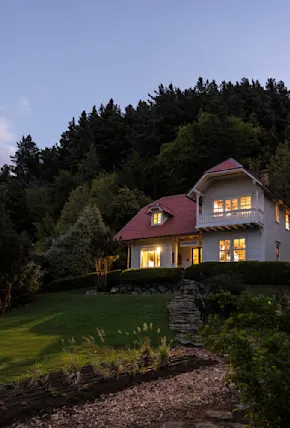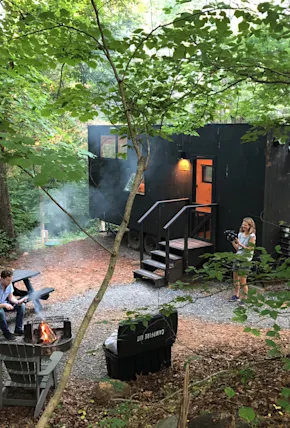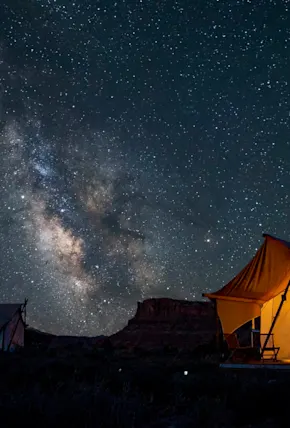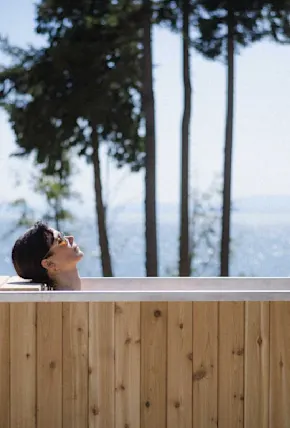From my bed in an A-frame cabin, I can see the snowy top of Québec’s Mont Tremblant, home to a massive ski resort of the same name. Snow fell all night. Even as the sun rises in the periwinkle sky, temps hover near negative 10° F. A quiet click signals that the gas fireplace is kicking on, breathing warmth into the small space. Good thing the coffee maker is nearby. I burrow deeper into the sheets. This is exactly the kind of simple luxury I imagined during my two nights at Farouche, a remote eco-resort in the Laurentian Mountains.
Husband-and-wife team Jonathan Casaubon and Geneviève Côté opened the architecturally adorable nature shelters in July 2022 on a sliver of their 100-acre wooded property. My cabin—named “La Tuque,” the French-Canadian word for winter hat—is one of seven connected by footpaths to the outdoor center with hot tub, and the lodge with bathrooms and a farm bar. Across the road is a Nordic farm, where, during the summer months, the hospitable couple stays busy growing cabbage, beets, carrots, and more produce to feed guests.
The entire premises was blanketed in several feet of snow when I visited in late February, but I was told that once the snow melts by May, they host group dinners there—the kind with an extended table in a field of wildflowers. I’ll add it to my list of reasons to return.
If this sounds up your alley as well, read on for our full review of Farouche.










